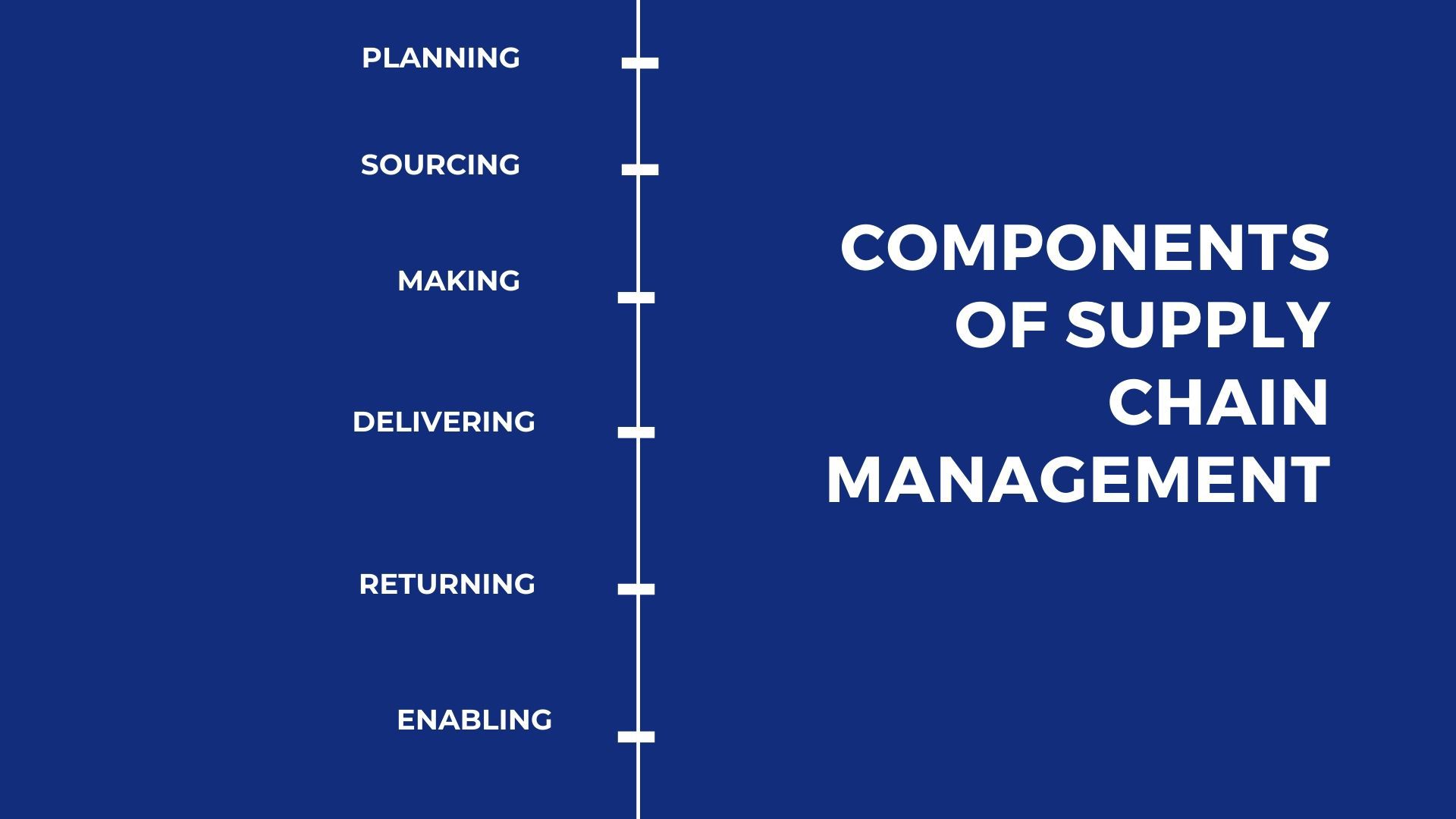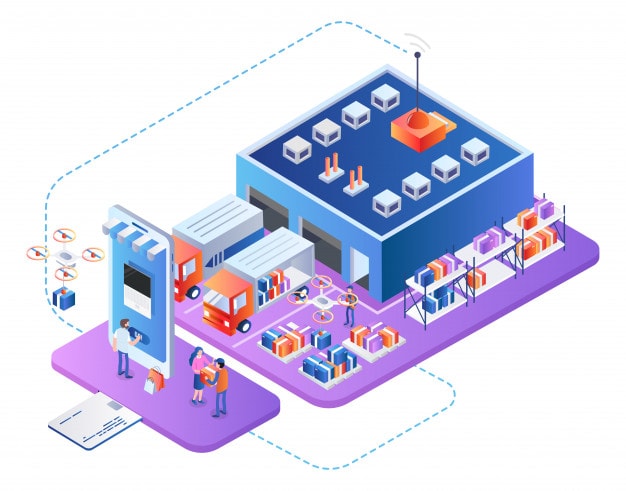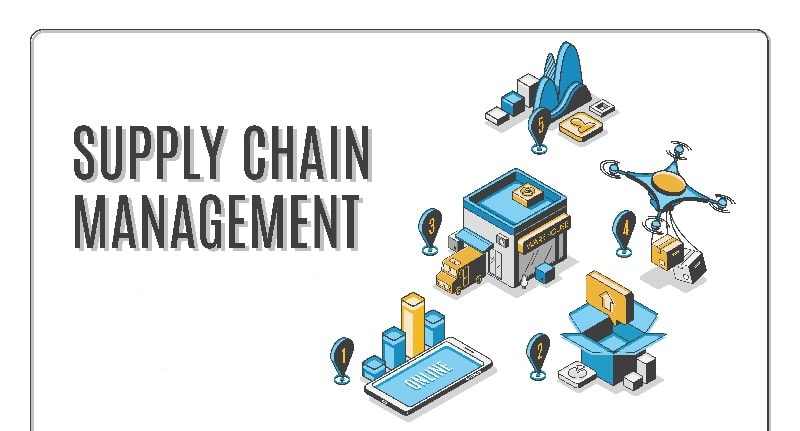Table of Contents
Definition
Supply chain management can be defined as a system that handles the entire production flow of goods and services in the organization. It monitors the life cycle of material as they enter the organization and move out of the organization.
What is supply chain management?
Supply chain management is the heart of every organization. It consists of all the processes that are involved in the life cycle of material in the organization from raw material to the final product and delivery to the customer. The effectiveness of supply chain management plays an essential role in the success of every business.
Companies are required to create a network of different suppliers to obtain different types of raw material that they need for the production process. Moreover, companies must have suppliers that can meet the demand of the material and can provide material in any quantity whenever it is required in the organization.
The role of supply chain management (SCM) has even increased more because of cut-throat competition in every market segment. Now several companies are providing similar products, which gives more options to the consumers to choose from. As a result of that, it becomes difficult for companies to survive in the market and is required to continually think about innovative ideas to stay ahead in the competition.
An adequate supply chain management is not only useful for the manufacturer, but it is also helpful for the suppliers. The manufacturer can increase the profit margin by rightly knowing the demand for the product in the market. Whereas, a supplier can manage his supply effectively to different manufacturers as he communicated the need for material on time.
Moreover, supply chain management helps in minimizing the costs of producing, shipping, storing, and ensuring the products that are not sold.
Six components of Supply Chain Management
The following are the six components of supply chain management.
1. Planning
Planning is the first and most essential element of supply chain management. The purpose of the planning component is to manage and plan all required resources in the organization to produce products and services to meet the demand of customers.
Planning for their supply chain design is necessary for an organization. Then they determine which metric they should use to ensure the efficiency and effectiveness of the supply chain of the organization. The role of planning is to keep up with the organizational goal and to stay ahead in the competition.
With the help of an action plan, the organization makes sure that it delivers value to its customers.
2. Sourcing
The second component of supply chain management is sourcing. The performance of an organization largely depends on its suppliers. It is an essential job of an organization to choose the right suppliers to deliver material and services that it requires to produce final products.
The organization gets into a contract with the suppliers, and suppliers provide products and services to the organization. An organization uses different processes to manage its relationships with the suppliers. Various methods are part of sourcing.
The main processes that are part of sourcing are ordering for the material, Receiving material, management of inventory, keeping communication with suppliers, and authorizing suppliers’ payment
3. Making
The next component of supply chain management is the making component. It is the responsibility of the supplier chain manager to coordinate the activities of production. Various activities are part of the supply chain management process.
The example of these activities is accepting raw material, manufacturing products, testing the quality of final products, discarding and recycling the stuff that does not match the quality standards, packing the final products, and scheduling the final delivery.
Organizations regularly check the quality, the productivity of employees, and output of production to make sure that the organization is creating products that meet the quality standards or not.
4. Delivering
The delivery component of supply chain management is also referred to as logistics. The delivery process is complex, and people choose your products influenced by the quality and speed of your delivery.
The delivery component of the supply chain management process consists of activities like coordinating customers’ orders, scheduling delivery, method of payment, dispatching deliveries, invoicing customers, and receiving the payment. The speed of your delivery of goods depends on the fleet of your vehicles.
Many organizations outsource their delivery work to specialized organizations to reduce their work and in the case when the delivery process requires special handling and extra efforts.
5. Returning
In this step, the organization returns the goods that are unwanted, defective, or in excess quantity. The supplier should be willing to take back the products and scrap or recycle the faulty products. In case the received products are surplus in volume, but in good shape, then it should be returned to the warehouse for sale.
6. Enabling
The supply chain requires different support processes to keep a check on the information following through the supply chain process. Supply chain management should abide by the regulations. The methods like Human resource, finance, IT, Portfolio management, facilities, product design, quality assurance, and sales are the essential processes of the enabling process.
Importance of Supply Chain Management
Supply chain management is essential for an organization. An organization can reduce cost, wastage of material, and time required for the production process with the help of effective supply chain management. In competitive times, the importance of supply chain management has become even more crucial.
The industry standards require supply chains to become just-in-time supply chains where manufacturers are immediately informed about manufacturing more as soon as the stock gets out of stock; so that retail shelves are never empty and can be restocked as soon as the goods are sold out.
The process can be improved by analyzing the data from supply chain management. The following are the three scenarios in which effective supply chain management improves the quality of the supply chain cycle.
1. Identifying the potential problems in the process
Several issues in the supply chain management process affect the performance of the business. For example, it is cynical business ethics if your business can’t deliver to meet the demand of customers. It will be considered as poor service if your organization is manufacturing less than the demand in the market.
In such scenarios, by analyzing the data of supply chain management, manufacturers can identify the shortage of goods and can manufacture accordingly to meet the demand of the customers. In this way, you can save yourself from disappointing your customers and can retain them for a more extended period.
2. Dynamic price optimization
Dynamic price optimization is necessary for the success of the business. Many products have a limited shelf life. These products, if not sold on time, become useless and are usually scrapped at the end of the season or are sold at discounted prices. Businesses whose businesses are affected by season use dynamic pricing to meet the demand of customers. For example, companies like airlines and hotels that sell perishable products adjust the pricing of their products dynamically.
Effective supply chain management helps in increasing the margin on the selling price of the goods. For example, you can adjust the pricing of goods that have a limited shelf life in such a way so that you can earn maximum profit in the beginning.
3. Enhancing the allocation of “available to promise” inventory
Sufficient supply chain management helps in the dynamic allocation of resources and material. An organization can schedule their work based on the information obtained from supply chain management. For example, production work can be planned according to the information available about the delivery of raw material, forecast of sales, and an actual number of orders.
A manufacturer can place an order for the raw material according to the number of requests received and the delivery date of goods. In this way, they can minimize the chances of incorrectly-filled orders and excesses of products produced.
Key features of effective supply chain management
Supply chain management is one of the essential parts of a business. A proper and effective supply chain management helps organizations to enhance their business and to build the reputation of the company.
A company with a good reputation can sustain their business for an extended period and can establish long-term relationships with the customers. It is essential to learn about the features of an effective supply chain management if you want to learn about it in detail.
1. Comprehensive
The data collected using supply chain management is compared with the data collected in real-time. The outcome obtained through this process is fast and thorough in nature. Supply chain management helps in avoiding latency in the future.
2. Connected
Supply chain management helps in connecting not only suppliers and manufacturers but also supports a manufacturer to communicate with their customers. A manufacturer can place orders as per the requirement of raw material available for the production process.
For example, businesses can collect data about the changing trends and can use this information to plan for future manufacturing work. This helps the organization to serve its customers better.
3. Cognitively enabled
The action in supply chain management is performed by collecting and coordinating information.
This helps the organization to perform effectively and make decisions in the supply chain. Many organizations have advanced supply chains that enable organizations in automated learning.
4. Collaborative
Supply chain management helps in collaboration between suppliers and manufacturers. Active partnership with suppliers helps an organization to serve its customers better.
5. Cyber aware
An adequate supply chain management should not only help the organization in enhancing their business but should also help them in making the system of the organization safe and intrusion-proof.
Here is a video by Marketing91 on Supply Chain Management.
Principles of Supply Chain Management
The following are the seven core principles of supply chain management that can be used in the supply chain of any organization irrespective of what type of product it produces.
1. Segment
Segmentation of your customers based on their demand and the service required by them. Then, use this information to make alterations to your supply chain so that you can serve each segment of customers efficiently and profitably.
Having a precise knowledge of your customer’s expectations and their purchasing habits enables you to serve the needs of your customers adequately.
2. Customization of logistics based on the segments
Once you have customized parts of your customers and their demands, then you are required to customize your logistics network to meet the service requirement and to serve each segment efficiently.
Curate your services in such a way so that you can meet the individual demand of your customers. In this way, you can not only serve your customers but can also stay profitable.
3. Forecast demands
Marketers are required to listen to the market demands and can plan their supply chain accordingly. Make sure that you keep your forecast consistent and make the use of optimal resource allocation. Make your Supply Chain Management (SCM) initiatives flexible so that you can be ready for all types of unexpected events that may occur in the business.
4. Products differentiation
Differentiate your products further down the supply chain. This will help you in determining the accurate demand metrics. You can be prepared with the customized products that your customers might demand at any point in time in the future.
5. Minimize costs
You can manage your resources in such a way so that you can minimize the cost of production. In this way, the total cost of owning material and producing products can be reduced. You can optimize the cost of raw material by coordinating with your suppliers. In this way, you can take benefit from the relationship with the suppliers.
6. Use technology
Make the use of technology and supply chain management tools to help you in decision-making at various levels and to provide a clear view of products, services, and information related to them.
7. Analyze the performance
At last, you are required to analyze the performance of all the efforts made by you. This will help you in determining the areas where you are required to put more energy so that your processes run smoothly.
How can businesses enhance their supply chains for better efficiency?
According to a recent report by Statista, the global supply chain management market size was valued at approximately $15.85 billion in 2019 and is projected to grow to about $37.4 billion by 2027. This significant growth rate underscores the increasing importance of effective supply chain management strategies in today’s business environment. Enhancing supply chain processes can lead to major cost savings and increased customer satisfaction, key factors for thriving in a competitive market (Statista, 2021).
For companies looking to optimize their supply chain, leveraging technology can be a game-changer. Tools like SAP Integrated Business Planning and Oracle SCM Cloud can provide real-time insights and predictive analytics, helping businesses manage supply and demand fluctuations more efficiently. Additionally, implementing an IoT-based inventory management system can minimize lead times and reduce operational costs. These advancements allow companies to maintain a robust, flexible supply chain capable of adapting to market demands swiftly.
Liked this post? Check out the complete series on Distribution



